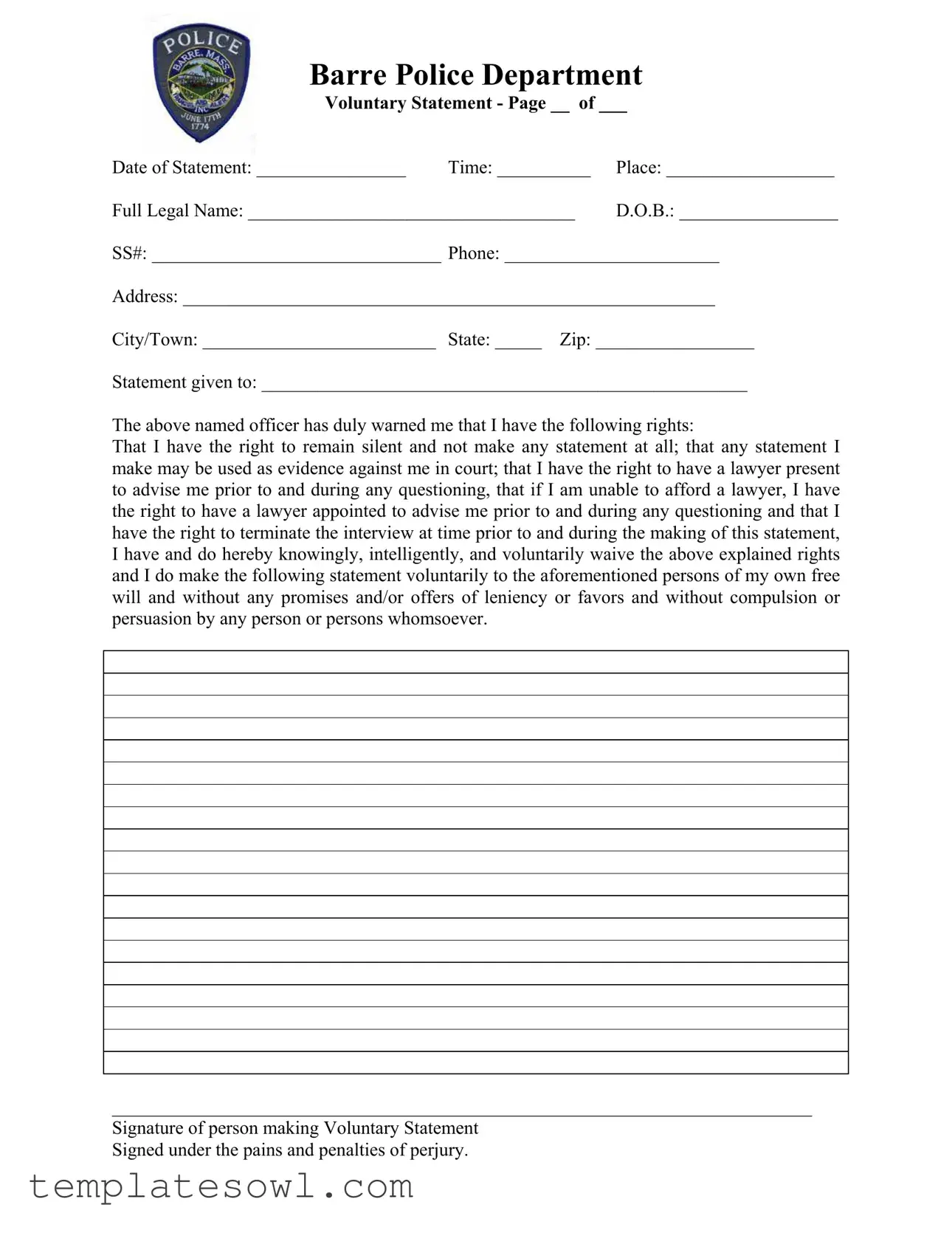What is the purpose of the Police Statement form?
The Police Statement form is used to gather an individual's account of an event or incident. It serves as a formal record of the individual's statement and may be utilized as evidence in a legal setting. The statement is provided voluntarily and must reflect the person’s own words and experiences related to the matter at hand.
What personal information is required on the form?
Essential information includes the individual's full legal name, date of birth, social security number, phone number, and address. This data helps the police department identify and contact the individual if necessary. Incomplete information may delay the processing of the statement.
Who receives the completed statement?
The completed statement is given to the officer taking the statement. The officer's name should be recorded on the form to ensure proper documentation and accountability. This helps maintain a clear chain of custody for the statement provided.
What rights are individuals informed of before signing the statement?
Before signing the statement, individuals are informed of their rights, including the right to remain silent, the right to have an attorney present, and the right to terminate the interview at any time. These rights are intended to protect the individual and ensure that any statement made is truly voluntary.
Can a person change their mind after starting the statement?
Yes, a person can change their mind during the process of providing their statement. They have the right to stop the interview and withdraw their statement at any point before it is finalized. This right ensures that individuals are comfortable and aware of the implications of their statements.
What happens if the statement contains false information?
If a statement contains false information, the individual may face legal consequences, including possible charges for perjury. It is crucial that the information provided is accurate and truthful to avoid complications down the line.
Do individuals need a lawyer to fill out the Police Statement form?
While it is not mandatory to have a lawyer present when filling out the Police Statement form, individuals have the right to consult one before making any statements. A lawyer can provide guidance on legal rights and help ensure that the individual's interests are protected during the process.


